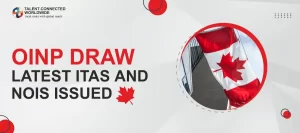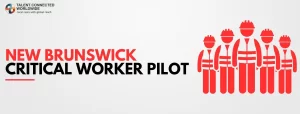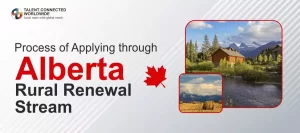
“Some economic classes and temporary foreign worker applicants will be impacted by the changing method Canada classifies occupations.”
In the fall of 2022, Canada’s immigration system will alter the way it defines vocations.
The reforms will affect some applicants from certain economic classes and foreign workers; however the federal administration has yet to specify which applications will be affected.
The National Occupational Classification is Canada’s system for classifying occupations (NOC). Every year, the NOC is reviewed and revised to ensure that it continues to reflect Canada’s dynamic labor market. It is upgraded every ten years or so, with the latest edition being the most significant upgrade since 2011. Last month, Statistics Canada released its updated NOC 2021 report.
Because the federal and provincial governments use the NOC to oversee skilled worker immigration programmes and the Temporary Foreign Worker Program, it is critical for Canadian immigration. The NOC eligibility criteria of the programme to which an immigrant or temporary foreign worker is applying must be met.
For example, skilled worker immigration applicants must demonstrate job experience in a NOC that falls under one of the following codes under Express Entry:
- NOC 0: Skill type 0 jobs are usually managerial in nature;
- NOC A: Skill type A jobs are professional in nature and usually require a university degree; or
- NOC B: Skill type B jobs are skilled trades occupations that usually require a college diploma or training as an apprentice.
NOC 2016 is now being used by the Department of Immigration, Refugees and Citizenship Canada (IRCC) as well as Canada’s provinces and territories to determine eligibility for skilled worker immigration programmes.
NOC 2016 has also been used by the Department of Employment and Social Development Canada (ESDC) to assess Labour Market Impact Assessment (LMIA) submissions.
The LMIA is a Labour market assessment conducted by the Canadian government. The Temporary Foreign Worker Program necessitates it (TFWP). ESDC must establish whether the hiring of a foreign national will have a positive or neutral impact on Canadian workers when evaluating an LMIA application. A foreign worker can then submit their LMIA and job offer letters to IRCC in support of their work visa applications.
NOC 2021 to be implemented in “fall 2022”
In an email to CIC News, the IRCC claimed that the federal government intends to be able to implement the new classification system sometime in “fall 2022.” This, it claimed, will give IRCC time to notify stakeholders of the changes and roll out the new system across all of its programmes. In order to guarantee consistency throughout the work permit application process, IRCC is harmonizing the rollout with ESDC.
New TEER system replaces NOC skill levels
The Canadian government will now categorize employment based on a new Training, Education, Experience, and Responsibilities (TEER) system, rather than the present practice of categorizing jobs based on skill type.
At present, NOC skill levels falls under four categories: A, B, C, and D.
NOC 2021 changes the current approach and introduces the new approach: TEER system which has six categories: TEER category 0, 1, 2, 3, 4, and 5.

Why Canada government is now planning to replace NOC skill levels with TEERs?
The statistics from Canada explains that this change was really necessary for several reasons.
NOC as of now focuses more on the occupation and not on skills. Whereas, TEER focuses more on skill than on occupation. It will also focus on education and experience required to work in a given occupation.
The statistics from Canada also argues that the previous NOC categorization system artificially creates a low-versus high-skilled categorization. This new structure mostly moves away from high/low categorization to more accurately capture the skills required in each occupation.
What impact will it have on the immigrants?
Once IRCC and ESDC have adopted NOC 2021, immigration and foreign worker applicants must confirm that their NOC matches the eligibility criteria of the programme to which they are applying.
One key area of concern, for example, is how IRCC and ESDC classify professions that are now classified as skill level “B.” This group has grown disproportionately large over time, according to Statistics Canada, since it encompasses occupations that require varied levels of education and experience. It is unclear which TEER categories will be eligible for Express Entry-managed programmes as well as other federal and provincial programmes that now require a “high skilled” NOC at this time.
For the time being, immigration applicants will have to wait for more information from IRCC and ESDC.

There are 516 vocations in the new TEER system, up from 500 in NOC 2016. To represent expanding industries such as data science, cyber security, and others, new jobs have been established.
Need more insights on the same? Get in touch with immigration consultants.
Click here! Also read this interesting: How Much is Indian CA Salary in Canada?








